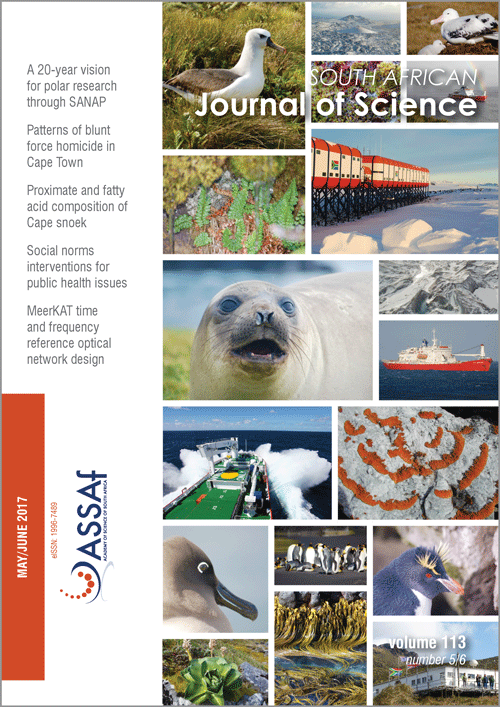Patterns of blunt force homicide in the West Metropole of the City of Cape Town, South Africa
DOI:
https://doi.org/10.17159/sajs.2017/20160214Keywords:
blunt force trauma, pattern of injuries, autopsy, fracture, lacerationAbstract
There is currently a lack of information regarding the prevalence of and characteristics associated with blunt force trauma related homicides in South Africa. Information relating to the patterns of blunt force trauma could assist in the development and implementation of interventions targeted at specific areas or individuals as well as direct future research towards areas in need of investigation. This study is a 5-year retrospective review of autopsy reports obtained from Salt River Mortuary (Cape Town, South Africa). The prevalence of blunt force trauma was considered for unnatural deaths with a focus on homicide. The patterns of homicidal blunt force trauma are also presented. A total of 15 519 autopsy cases was analysed. In 1198 (7.72%) of these cases, the cause of death was found to be blunt force trauma and 828 (5.32%) of these cases were classified as homicides. Approximately 11% of blunt force homicide cases occurred in combination with sharp and/or ballistic trauma. Men from poor socio-economic areas were shown to be most at risk of blunt force homicide in the City of Cape Town.
Significance:- The prevalence of homicidal blunt force trauma in the Western Metropole of the City of Cape Town is comparable to other regions in South Africa.
- The vast majority of victims sustained injury to the head, highlighting the need for further research in cranial blunt force trauma.
- Interventions should target young men, particularly in low socio-economic regions.
Published
Issue
Section
License

All articles are published under a Creative Commons Attribution 4.0 International Licence
Copyright is retained by the authors. Readers are welcome to reproduce, share and adapt the content without permission provided the source is attributed.
Disclaimer: The publisher and editors accept no responsibility for statements made by the authors
How to Cite
- Abstract 711
- PDF 650
- EPUB 233
- XML 260













.png)